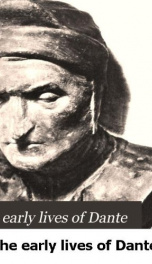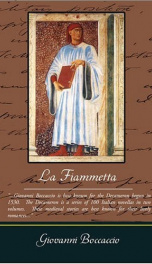The Decameron, Volume I

The Decameron (subtitle: Prencipe Galeotto) is a collection of 100 novellas by Italian author Giovanni Boccaccio, probably begun in 1350 and finished in 1353. It is a medieval allegorical work best known for its bawdy tales of love, appearing in all its possibilities from the erotic to the tragic. Some believe many parts of the tales are indebted to the influence of The Book of Good Love from the Literary Circles of the Court of King Alfons X "the Wise". Many notable writers such as Chaucer are said to have drawn inspiration from The Decameron.The title is a combination of two Greek words meaning "ten" (δέκα déka) and "day" (ἡμέρα hēméra).The Decameron is structured in a frame narrative, or frame tale. Boccaccio begins with a description of the Black Death and a group of seven women and three men who flee from plague-ridden Florence to a villa in the (then) countryside of Fiesole for two weeks. To pass the time, each member of the party tells one story for each one of the nights spent at the villa. Although fourteen days pass, two days each week are set aside; one day for chores and one holy day during which no work is done. In this manner, 100 stories are told by the end of the two weeks.Each of the ten characters is charged as King or Queen of the company for one of the ten days in turn. Each character tells a tale of a unique individual's personal experience. This charge extends to choosing the theme of the stories for that day, and all but two days have topics assigned: examples of the power of fortune; examples of the power of human will; love tales that end tragically; love tales that end happily; witty replies that save the speaker; tricks that women play on men; tricks that people play on each other in general; examples of virtue. Only Dioneo, who usually tells the tenth tale each day, has the right to tell a tale on any topic he wishes, due to his wit.Each day also includes a short introduction and conclusion to continue the frame of the tales by describing other daily activities besides story-telling. These frame tale interludes frequently include transcriptions of Italian folk songs. The interactions among tales in a day, or across days, as Boccaccio spins variations and reversals of previous material, form a whole and not just a collection of stories.Boccacio made similar Greek etymological plays of words in some of his other works. The subtitle is Prencipe Galeotto, which derives from the opening material in which Boccaccio dedicates the work to ladies of the day who did not have the diversions of men (hunting, fishing, riding, falconry) who were forced to conceal their amorous passions and stay idle and concealed in their rooms. Thus the book is subtitled Prencipe Galeotto, that is Galehaut, the go-between of Lancelot and Guinevere, a nod to Dante's allusion to Galeotto in "Inferno V", who was blamed for the arousal of lust in the episode of Paolo and Francesca.
Info about the book
Author:
Series:
Unknown
ISBN:
1145785093
Rating:
2.5/5 (40)Your rating:
0/5
Languge:
English
Users who have this book
Users who want this book
What readers are saying
What do you think? Write your own comment on this book!
write a commentif you like The Decameron, Volume I try:
Do you want to read a book that interests you? It’s EASY!
Create an account and send a request for reading to other users on the Webpage of the book!




